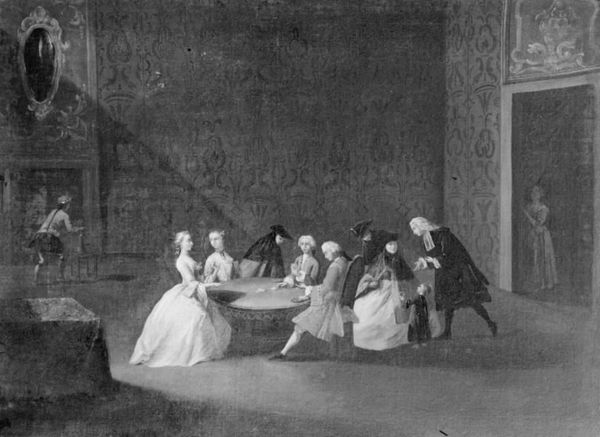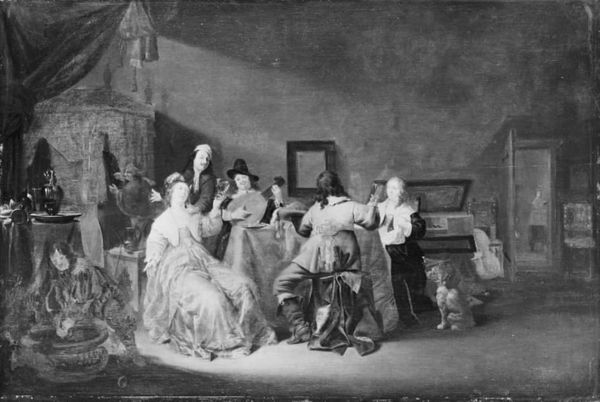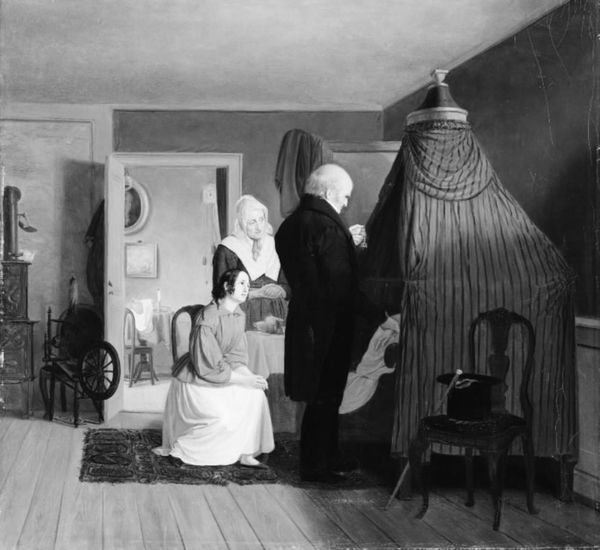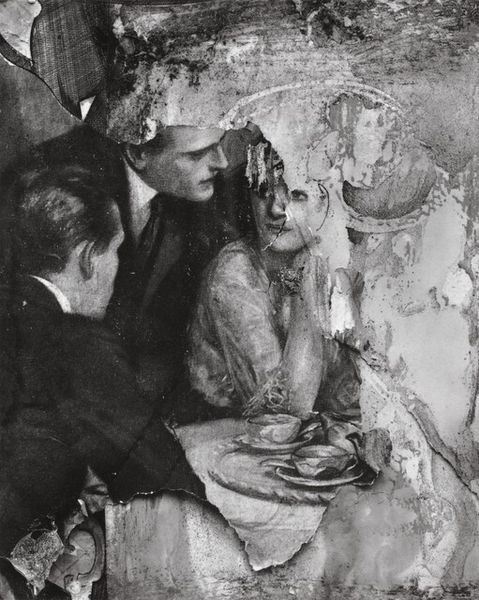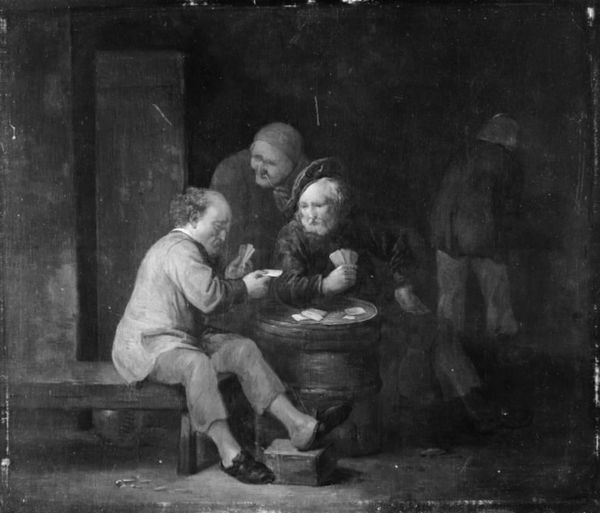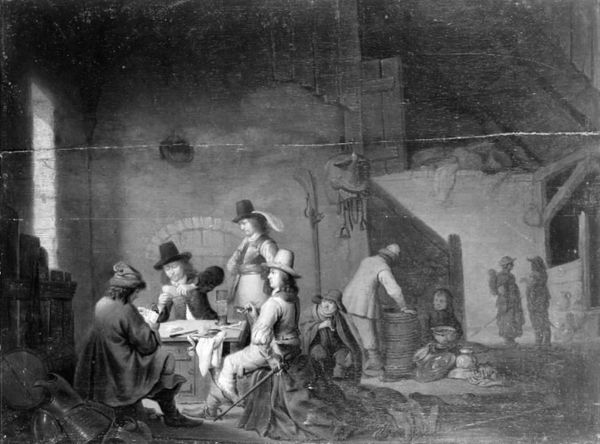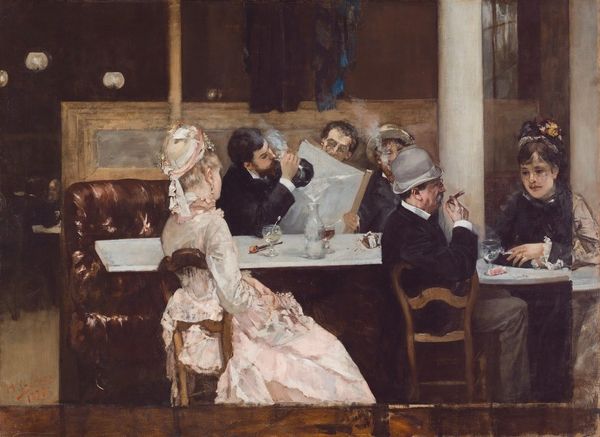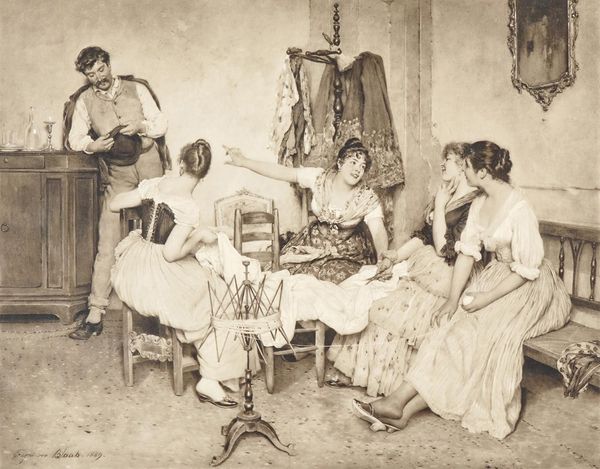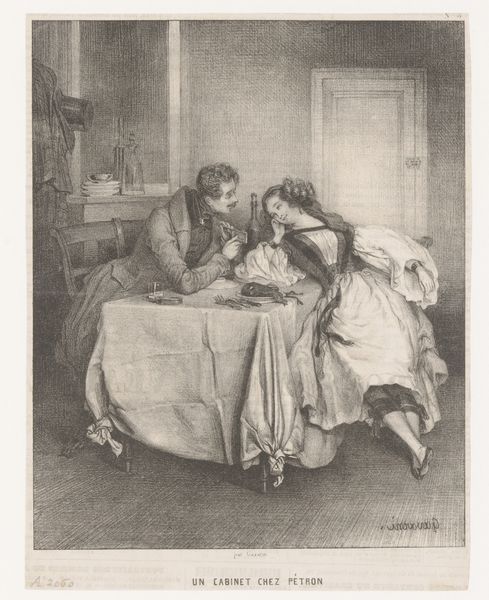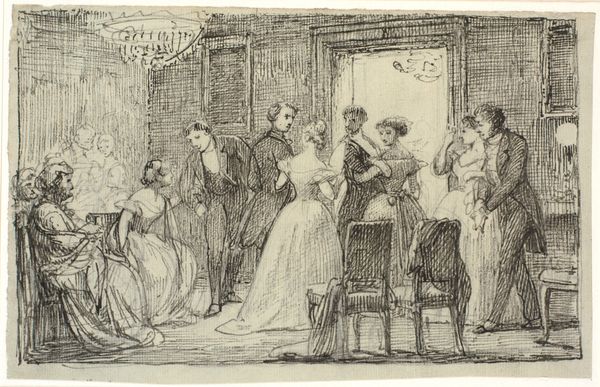
Dimensions: 157 cm (height) x 186 cm (width) (Netto)
Curator: This is Wilhelm Marstrand’s “Frierens besøg”, painted in 1857. It’s currently held here at the SMK, the National Gallery of Denmark. Editor: My first impression is of a scene suspended in time, rendered in shades of quiet contemplation. The somber tones amplify the sense of intimacy; it's as though we've stepped into a private moment within this family’s life. Curator: Indeed. Marstrand, an important figure in Danish Golden Age painting, meticulously constructs a narrative scene. Note the positioning of the figures – the woman sewing, the grandmother beside her, the gentleman with the child—it seems deliberately arranged. Consider too, the labour embodied: needlework being a distinctly feminine occupation of that era. What narratives do those visual elements conjure? Editor: Sewing certainly ties the image to themes of domesticity, the feminine sphere and ideas of craft but it might signify patience, anticipation, and preparation too, reflecting societal expectations. It is central to understanding social frameworks from the mid-19th century. What kind of dialogue is going on between generations? The elderly woman in her cap seems almost an archetypal wise figure looking on. Curator: Exactly! We see generational relationships embodied in labour practices. This family gathering underscores a domestic ideal of industriousness. It’s a glimpse into the materiality of 19th-century life, through Marstrand's focus on what and how labour is carried out. What about the arrangement suggests academic art to you? Editor: The considered placement of elements, definitely! But there's also an echo of traditional themes and archetypes woven in the fabric of the scene. Each detail becomes significant, laden with the potential to resonate on many levels of symbolism and cultural expectation of a certain historical era, offering a commentary on societal frameworks and expectations. Curator: It seems our different lenses have, once again, shown the richness within Marstrand’s narrative, an interplay between labor, image, and representation in this carefully arranged setting. Editor: I see echoes in the quiet interplay between figures too – each carrying historical meanings about their roles and social structures. They all point towards an overarching atmosphere charged with emotional and cultural depth.
Comments
No comments
Be the first to comment and join the conversation on the ultimate creative platform.


